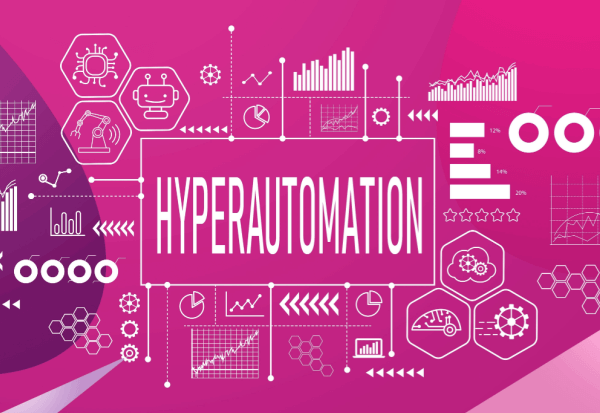It will no longer be wrong to say that the world today belongs to Artificial Intelligence (A.I.), given the multiple ways it has infiltrated our lives, either directly or indirectly. Until recently, most of the work was performed only by a human with training and specialized knowledge. Some A.I. use cases in our daily lives include spam filters, Alexa, Siri, driverless cars, automatic vacuum cleaners, etc., used in different sectors like technological industries, healthcare, education, transportation, defense, law, agriculture, and more. It is challenging for companies to safeguard their data, protect their privacy and avoid data loss. Data breaches have harsh consequences. These days cybercriminals have become more innovative, and companies must mature in technology to avoidthreats and attacks.
In general, data can be stolen or shared from an organization either by ways as simple as via website forms, emails, or USB or through a malicious activity like hacking. Data Loss Prevention (DLP) systems are designed to stop sensitive information from being leaked, spitefully, or inadvertently.
There are multiple exit points for data leaks through the web browser, I.M., Printing, including removable media, which can be tackled by deployable solutions like DLP integrated with A.I.
Next-Gen Data Loss Prevention & capabilities
Data management and security practices are changing rapidly as data lies in distributed sources and primarily resides in the cloud. Cloud solutions have enabled businesses to make it more accessible and economical to process their work, thus creating the new I.T. challenge of managing fully distributed data, which is no longer on-prem. Data is everywhere. The traditional hub and security model is insufficient for securing data in the cloud.
Every organization should think about implementing modern data loss prevention (DLP) practices, and there are several key capabilities:
- Machine learning: Next-gen advances in DLP are machine learning capabilities that automatically identify potentially sensitive information so that data can be protected.
- Privacy compliance: With the next-gen DLP making it easier to follow the GDPR, CCPA, and other data privacy regulations, it will be a valuable tool for helping organizations protect and maintain customer privacy.
- Data labeling: Next-gen DLP tools have enabled automation to self-assess and identify the data types that need protection by allowing in the policies.
- Cloud: Day by day, businesses are shifting to the cloud; due to that, the DLP market, much like the broader I.T. market, has been shaped in recent years by the rise of the cloud. No longer is business data grounded to on-premises deployment. DLP solutions, therefore, must prevent sensitive data in the cloud.
However, we can say that in the coming years, Artificial Intelligence (A.I.) will drive the next gen of intelligent data leak/loss prevention solutions, impacting detection capabilities at all areas and levels.
DLP & Artificial Intelligence
Data protection is a continuous practice.
- The first step is to have complete data visibility by monitoring all outbound traffic.
- Step two is to block any compromised traffic that isn’t authorized to pass outside the network.
- Step three is to focus on compressed or encrypted files that users may be sending outside since the maximum exfiltration points for the company are personal storage and email or the cloud.
- Lastly, the data residing in the cloud should be secured and not exposed to the outside of the organization.
Talking about the impact of A.I. in the DLP regime – Artificial Intelligence (A.I.) seems progressive to transform the world of data security and transform DLP solutions to the next level. This will occur through better analysis and early tackling of losses by capitalizing on machine learning and intelligent algorithms. Learning manipulation patterns and data transfer will develop self-repair capabilities alongside control techniques and self-adjustment.
The Digital Guardian report states, “The U.K.’s data protection authority is hoping that advances to artificial intelligence incorporate data protection by design and is seeking the public’s opinion on how to do so.”
How does AI-powered DLP work?
The on-prem DLP approach isn’t much effective in cloud structured and unstructured data. It requires continual policy fine-tuning, ongoing management by large teams, and manual process. DLP infused with A.I. is better and faster than ongoing DLP solutions at finding business-critical data analysis and reporting. An automated DLP is self-learning and needs less intervention from Data Security Teams, thus freeing up their time to focus on more high-value tasks rather than constantly monitoring and maintaining the false-positive incidents raised by the DLP solution.
With AI, the DLP solution can perform multiple tasks in less time; it can automatically find and secure confidential data and follow the GDPR, CCPA, and other data privacy regulations. It can also find customer PII or PHI across cloud applications, APIs, and broader infrastructure. At first, you’ll set up the DLP solution with a few rules so that it knows what to look for and how to respond. From there, the machine learning element of the DLP enables the solution to learn and interrogate new data, leading to the automatic redaction of sensitive data. Moreover, machine learning can also be applied to user behavior, enabling your DLP solution to respond to risky or abnormal user behavior by redacting or blocking users from sending certain pieces of information.
A.I. use in Data Storage
A.I. can be used for defense strategy as it is very data intensive. This setup needs to be analyzed; every email must be sent to an external system, off-site. Especially for industries dealing with sensitive information, the fact that their data is going elsewhere to be scanned is a concern. Moreover, with Machine Learning, the technology must keep a part of this sensitive information to learn rules from it and use it repeatedly to make an accurate decision the next time.
Conclusion
Organizations rely more on email within business practices; accidental data leakage is an inevitable risk. The implications of reputational impact, compliance breach, and associated financial damage can be devastating.
A cyber-aware culture with continuous training is essential. Providing technology that alerts users when they are about to make a mistake, either by sending an email to the wrong person or sharing sensitive data about the company with its customers or staff, not only minimizes errors, but it also needs to create a healthier email culture. Mistakes are easily made in a fast-paced, pressured working environment. But rather than leaving this responsibility to Artificial Intelligence, this type of technology, combined with trained human insight, can enable users to make more informed decisions about the nature and legitimacy of their email before acting on it.

Technical lead, IMSS-Digital Risk at Happiest Minds Technologies. Shashank Mishra, comes with 6+ years of experience in Data Security & Privacy Consulting, Implementation, and maintenance of Data Security administration. He has worked as a Data Security, Web Security, and Email Security Implementor, Consultant, and Administrator and successfully delivered multiple projects on DLP and Proxy. Shashank graduated from Awadh University Faizabad (U.P.) and is a trained Implementor in DLP and Forcepoint Proxy.








